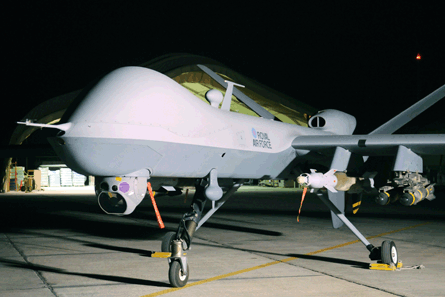The UK Ministry of Defence could adopt a landing gear modification for its General Atomics Aeronautical Systems Reaper remotely piloted air systems, with the enhancement to boost the type's maximum take-off and landing weights for use in Afghanistan.
Responding to a parliamentary question about potential UK interest in the enhanced main landing gear design on 24 January, minister for defence equipment and support Peter Luff confirmed: "We are discussing this option with the United States Air Force and considering it alongside a range of other potential modifications to the UK's Reaper systems."
Earlier this month General Atomics revealed details of the design modification, saying it had already received interest from at least one existing Reaper operator. Adopting the new design will increase the MQ-9's maximum take-off weight to 5,310kg (11,700lb) from 4,770kg, boost its landing weight capacity by 30% and also support the possible introduction of an automatic take-off and landing mode, the company said.
 |
|---|
© Sgt Pete Mobbs/Crown Copyright |
Acquired for the Royal Air Force's 39 Sqn using urgent operational requirement (UOR) funding and flown from Kandahar airfield in support of UK and coalition activities in Afghanistan, the UK's Reapers are currently commanded from the USAF's Creech AFB in Nevada.
Primarily employed as intelligence, surveillance and reconnaissance assets, the aircraft also each carry four Lockheed Martin AGM-114 Hellfire air-to-surface missiles and two Raytheon GBU-12 Paveway II 226kg precision-guided bombs for offensive purposes.
Under a follow-on purchase, the RAF's inventory of the type will be doubled to a total of 10 air vehicles from later this year, with a new mission control capability to be established at the service's Waddington air base in Lincolnshire, eastern England.
With the UK expected to withdraw its last combat forces from Afghanistan in 2015, a decision is yet to be confirmed over whether it will extend its use of the Reaper fleet beyond the end of its current UOR arrangements in March that year.
Source: Flight International























